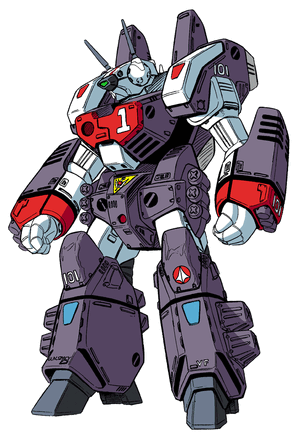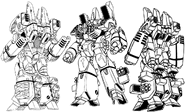
Originally commissioned only for special operations, the GBP-1S nonetheless saw first operational deployment in space for a routine patrol on October 2009. Then Second Lieutenant Hikaru Ichijo launched from CVS-101 Prometheus in a GBP-1S equipped VF-1J Valkyrie on a deep space reconnaissance mission to determine possible Zentradi incursion. Very little useful information on performance was gained from the deployment of the GBP-1S during Hikaru's mission, mostly due to poor tactical maneuvering. Although flight records do indicate the GBP-1S functioned as designed, both offensively and defensively, the effectiveness of the unit was left in question. Some UNS analysts critical of the October 2009 deployment suggest the poorly conceived near-simultaneous launch of the full GBP-1S ordnance allowed the enemy to intercept a few initial missiles resulting in the sequential, premature detonation of most the munitions before they were able to impact. These same analysts also note the successful defensive performance of the GBP-1S, resulting in the initial counter of several direct hits from enemy fire before the system was ejected from Lt. Ichijo's VF-1J.
Despite the less than ideal initial deployment of the GBP-1S, the system was not abandoned and further designs continue to find use in successive variable fighters, most notably the Protect Armor system found on the VF-11 Thunderbolt.
| Type | GBP-1S Ground-combat protector weapon system |
| Manufacturer | Shinnakasu Heavy Industry |
| Introduction | October 2009 |
| First Deployment | October 2009 |
| Accommodation | Pilot only in Marty & Beck Mk-7 zero/zero ejection seat |
| Dimensions | Battroid Mode: height 14.1 meters; width 9.8 meters; length 4.8 meters |
| Mass | 16.2 metric tons GBP-1S system; 37.1 metric tons standard operational mass (VF-1J 18.5 metric tons T-O mass plus GBP-1S and fuel) |
| Structure | Space metal frame, SWAG energy converting armor, GBP-1S Reactive Armor |
| Power Plant | Two Shinnakasu Heavy Industry/P&W/Roice FF-2001 thermonuclear reaction turbine engines, output 650 MW each |
| Propulsion | 11,500 kg [x g] x 2 (23,000 kg [x g] x 2 in overboost) (225.63 kN x 2 overboost); GBP-1S - 2 x assist thrusters (output unknown); 10 x low-thrust vernier thrusters beneath multipurpose hook/handles |
| Thrust-to-weight ratio | Unknown |
| Performance |
|
| G Limit | In space +7 |
| Design Features | 3-mode variable transformation; variable geometry wing; vertical take-off and landing; control-configurable vehicle; single-axis thrust vectoring; three "magic hand" manipulators for maintenance use; retractable canopy shield for Battroid mode and atmospheric reentry; GBP-1S Ground-combat protector weapon system |
| Transformation |
|
| Armaments |
Guns
Bombs & Missiles
Optional Armament
|



